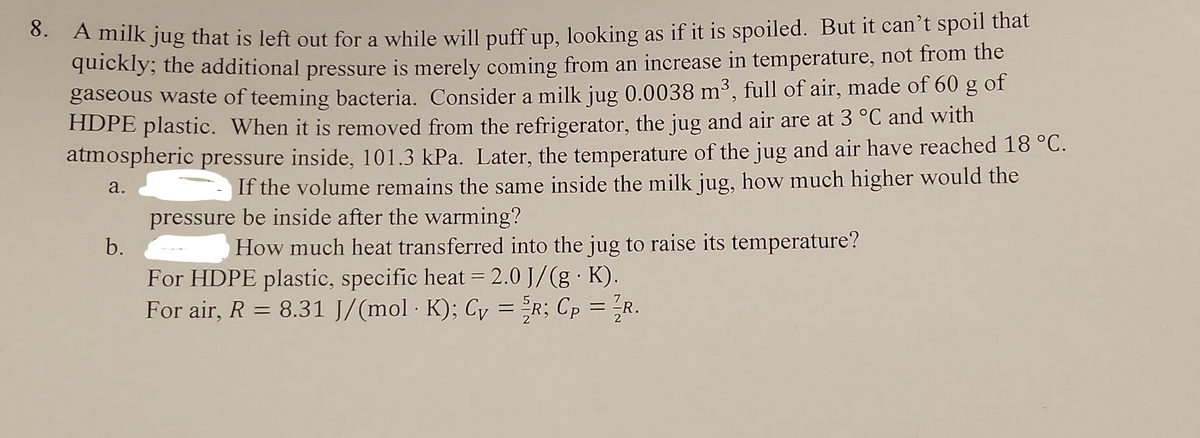A milk jug that is left out for a while will puff up, looking as if it is spoiled. But it can't spoil that quickly; the additional pressure is merely coming from an increase in temperature, not from the gaseous waste of teeming bacteria. Consider a milk jug 0.0038 m³, full of air, made of 60 g of HDPE plastic. When it is removed from the refrigerator, the jug and air are at 3 °C and with atmospheric pressure inside, 101.3 kPa. Later, the temperature of the jug and air have reached 18 °C. If the volume remains the same inside the milk jug, how much higher would the pressure be inside after the warming? a. How much heat transferred into the jug to raise its temperature? b. For HDPE plastic, specific heat = 2.0 J/(g. K). For air, R = 8.31 J/(mol · K); Cy = ½r; Cp = ½r.
Energy transfer
The flow of energy from one region to another region is referred to as energy transfer. Since energy is quantitative; it must be transferred to a body or a material to work or to heat the system.
Molar Specific Heat
Heat capacity is the amount of heat energy absorbed or released by a chemical substance per the change in temperature of that substance. The change in heat is also called enthalpy. The SI unit of heat capacity is Joules per Kelvin, which is (J K-1)
Thermal Properties of Matter
Thermal energy is described as one of the form of heat energy which flows from one body of higher temperature to the other with the lower temperature when these two bodies are placed in contact to each other. Heat is described as the form of energy which is transferred between the two systems or in between the systems and their surrounding by the virtue of difference in temperature. Calorimetry is that branch of science which helps in measuring the changes which are taking place in the heat energy of a given body.
Please answer this within 30 mins ! I will upvote !

Step by step
Solved in 3 steps with 3 images








